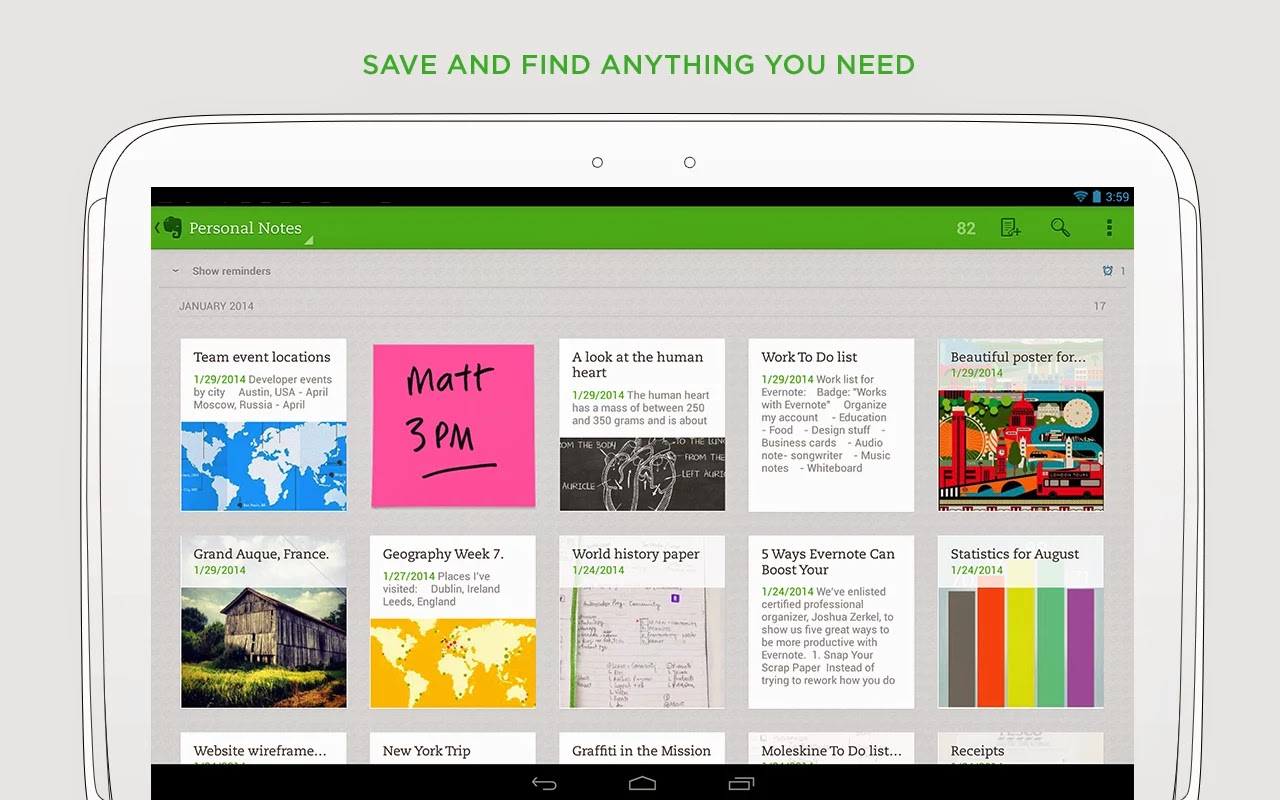
setRequiresBatteryNotLow(boolean requiresBatteryNotLow) – set to true if you don’t want to run your Worker when the device’s battery is low.setRequiresDeviceIdle(boolean requiresDeviceIdle) – set to true if you want to run your Worker only when the device is idle.

#What is evernote android job manager code#
You need to override the doWork() method and your long-running code goes inside this method. It is responsible for specifying what work needs to be done. This is the component of the WorkManager API that actually performs the work. The WorkManager API has 3 main components:

In terms of Android knowledge, you’ll need a basic understanding of: This article will serve as a tutorial for anyone who’s looking to get started with using the WorkManager API in their Android app. Note : It’s important to keep in mind that while WorkManager is a great solution to perform tasks in Android, it’s also still in the alpha stages. Android Jetpack is a collection of Android components by Google that makes app development easier and the apps more robust. WorkManager is part of the Android Architecture Components, which is a part of Android Jetpack.

To just give you an idea, WorkManager is fit for apps that require you to: It does all the heavy-lifting for you by performing your task exactly the way you desire it to be performed by automatically choosing one of the following three APIs: WorkManager is an API introduced and developed by Google that lets you perform asynchronous, periodic and scheduled tasks on Android in a much more efficient way, compared to the traditional ways.Īndroid developers know the pain of detecting the user's device and then choosing between JobScheduler, Firebase JobDispatcher, ScheduledExecutorService, or AlarmManager to schedule a task.

While these APIs are great and have received constant development updates throughout the years, Google has introduced a new API called WorkManager, that does all of this in a way that's much more efficient. These APIs have been used by Android developers for years now. Up till now, you might have been using the following APIs for scheduling tasks:Īll of these APIs have their own use-case scenarios, where they would be the right fit to get the job done. If you’ve been an Android developer for a while, you‘ll be familiar with the difficulties faced when trying to write code for scheduling tasks in Android.


 0 kommentar(er)
0 kommentar(er)
